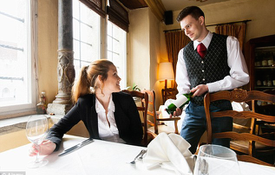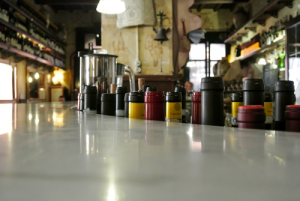
Ordering Wine in a Restaurant
Ordering wine in a restaurant is a task that strikes fear into the hearts of many diners. Many people are intimidated by the entire process afraid to look foolish. Relax.
There is no need to approach what should be an enjoyable meal with dread or doubt. Here are a few rules to obey when ordering wine in restaurants.
I offer 10 tips on how to navigate a restaurant’s wine list.
- Never be intimidated as, sadly, your server likely knows little about wine (even the very small subset of wines contained on the restaurant’s wine list). If you are lucky, the server does know wine, or at least their wine list, and can help you navigate the choices. The paradox is that the more knowledgeable the server, the more likely they are to be gentle and helpful. The inverse is also certainly true.
- There are so many wines available in the marketplace today that it is impossible to be familiar with all of the labels that you will encounter. I have been in the drinks business for 30 years and I constantly see brands that I have never previously encountered. Again – lose the intimidation factor.
- Take your time — don’t be rushed. If you would like some wine with your decision-making, ask about a glass of house wine.
- A house wine can tell you a lot about the restaurant’s wine program and their overall philosophy of offering wine to their guests. A house wine should meet three criteria: provide an easy, no-fuss method of getting the customer a glass of wine; provide value; and signal to wine loving customers that this establishment is serious about providing quality wines at all price points. Most American restaurants fail the house wine test as they are very aware of criteria one and two (easy and cheap) so they put zero care into making the selection using price as their exclusive guide. If the house wine stinks — you are not in an establishment that cares about wine or their customers.
- Follow the cuisine. A well-curated wine list will offer wines that are friendly with the food they serve. An Italian restaurant’s wine list should be dominated by Italian wines and the same is true for French, Spanish, and so on.
- Do your homework. Many restaurants offer a look at their wine list online. Do be aware that almost every online wine list that I have encountered is out of date so don’t get your heart set on one particular bottle. Rather use the online list to gauge the depth, composition (is it primarily domestic or Italian, or French, and so on), and the price range of the wine list. If you are unable to do prior research you likely have a smart phone — be smart and use it.
- Find a guidepost on the wine list. If you are an occasional wine drinker you will likely find a wine on the list that you have previously enjoyed. Ask your server about this familiar wine. Their response will tell you a little something about their knowledge of the wine list. If you like their description tell that you fully agree and ask if they can recommend a similar wine from the list. If they confidently offer a suggestion go with it and if not at least you have a trusted choice to fall back on.
- The only fear that is permitted when ordering wine in a restaurant is the fear of being ripped off. Scan the wine list for wines that you may know. If you have bought one or more of these wines recall the retail price. The relationship of a wine’s retail price as compared to the restaurant’s asking price will tell you everything. Typically a retailer marks-up his wine one-and-a-half times and a restaurant will mark-up three times. (For example a retailer buys the wine at $10 a bottle and sells at $15 while the restaurant buys at $10 and sells at $30. As you see, this neatly translates to the restaurant selling wines at double the retail price.) Do your research. Winesearcher.com is a great site for finding average retail prices. If the wine you are interested in buying is listed at $45 on the wine list but the average retail price is $15, or less, the restaurant is attempting a robbery — don’t let them do it. Return the wine list to the server and order a beer.
- I’m serious about refusing to order wine. I am fairly rigid to this rule these days — even when I’m really craving wine. If more customers armed themselves with knowledge and refused to be ripped-off while dining out, restaurants would be forced to change their ways. Conversely, if the restaurant’s wine prices are fair or better yet terrific, reward the establishment with generous wine orders and frequent visits. Also be sure to tell your wine-loving friends about the great wine values. Far too many restaurants follow antiquated mark-up schemes. They lack the knowledge to structure their wine offerings in such a way as to maximize revenue while offering value to their customers. The only way they know how to generate income from wine is to get maximum dollars from every unsuspecting soul that falls into their trap.
- Last but certainly not least – Don’t be afraid to talk price. They are not giving away the wine and in most cases they are making a handsome profit so don’t be shy about expressing your budget. Stating your budget means that you will not spend more than you are comfortable spending and in the best case scenario it allows a helpful and knowledgeable server to get you the most wine for the dollar.

You Should be Able to Trust the House Wine
Remember, if you are a wine lover, wine is part of your lifestyle and certainly part of your meals. Buy wisely as you do with everything else you purchase with your hard-earned dollars. Wine is not a luxury item so don’t be intimidated into over-paying and always be sure to reward restaurants with fair mark-ups with your dollars and your verbal praise.
